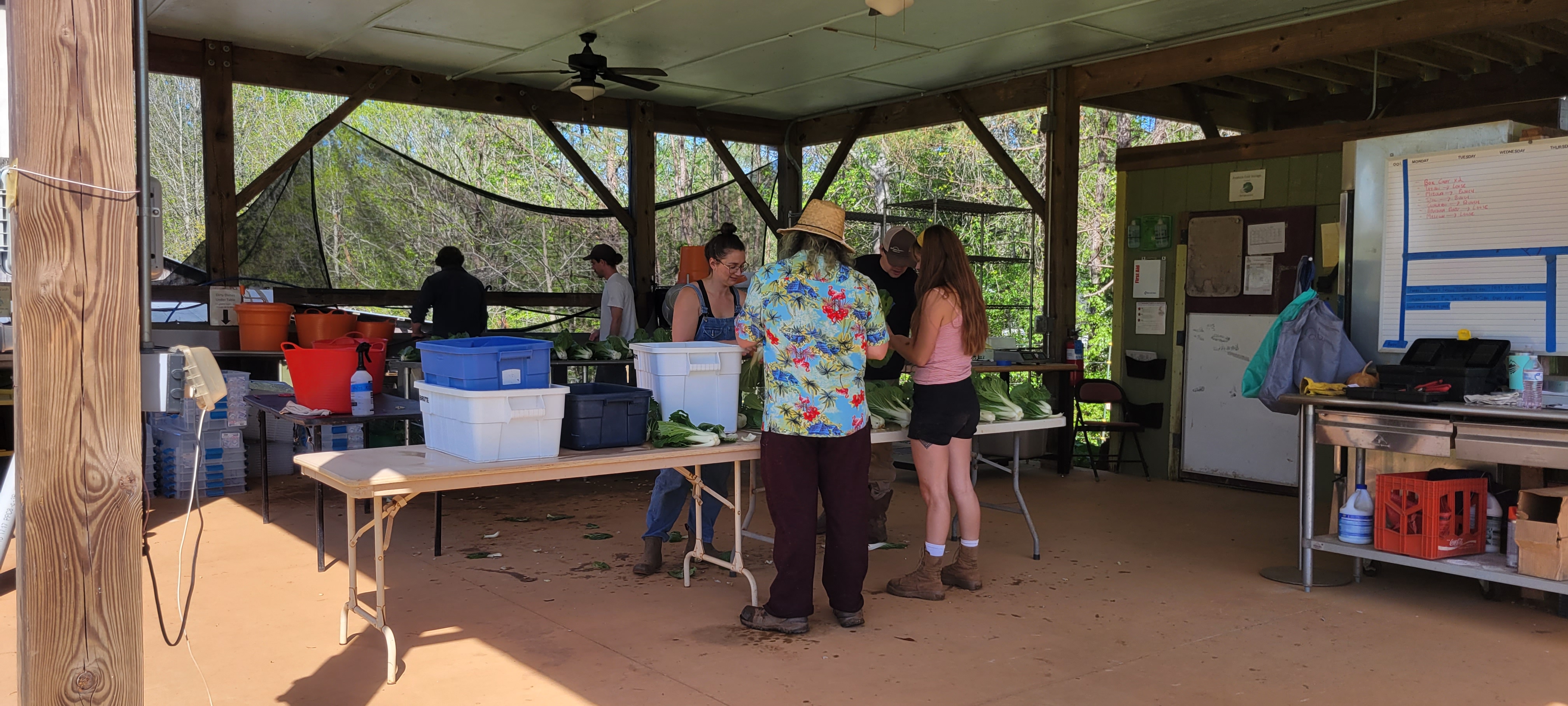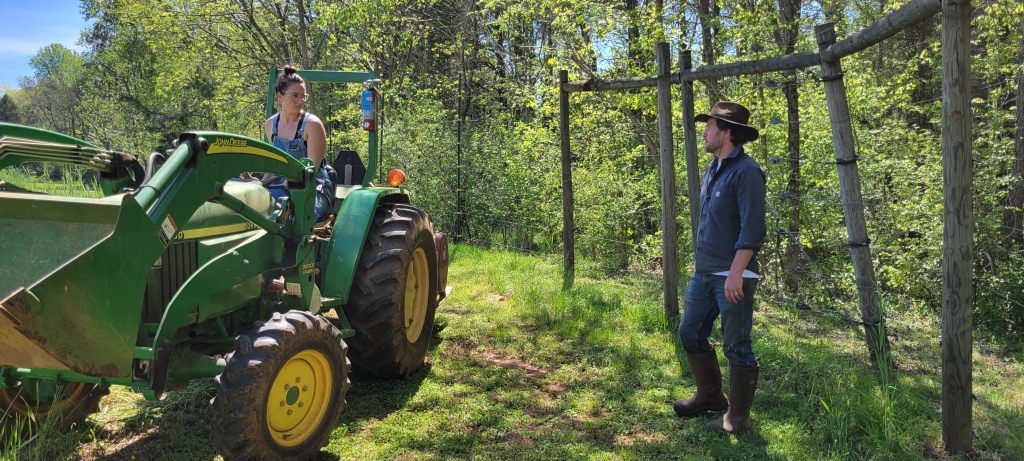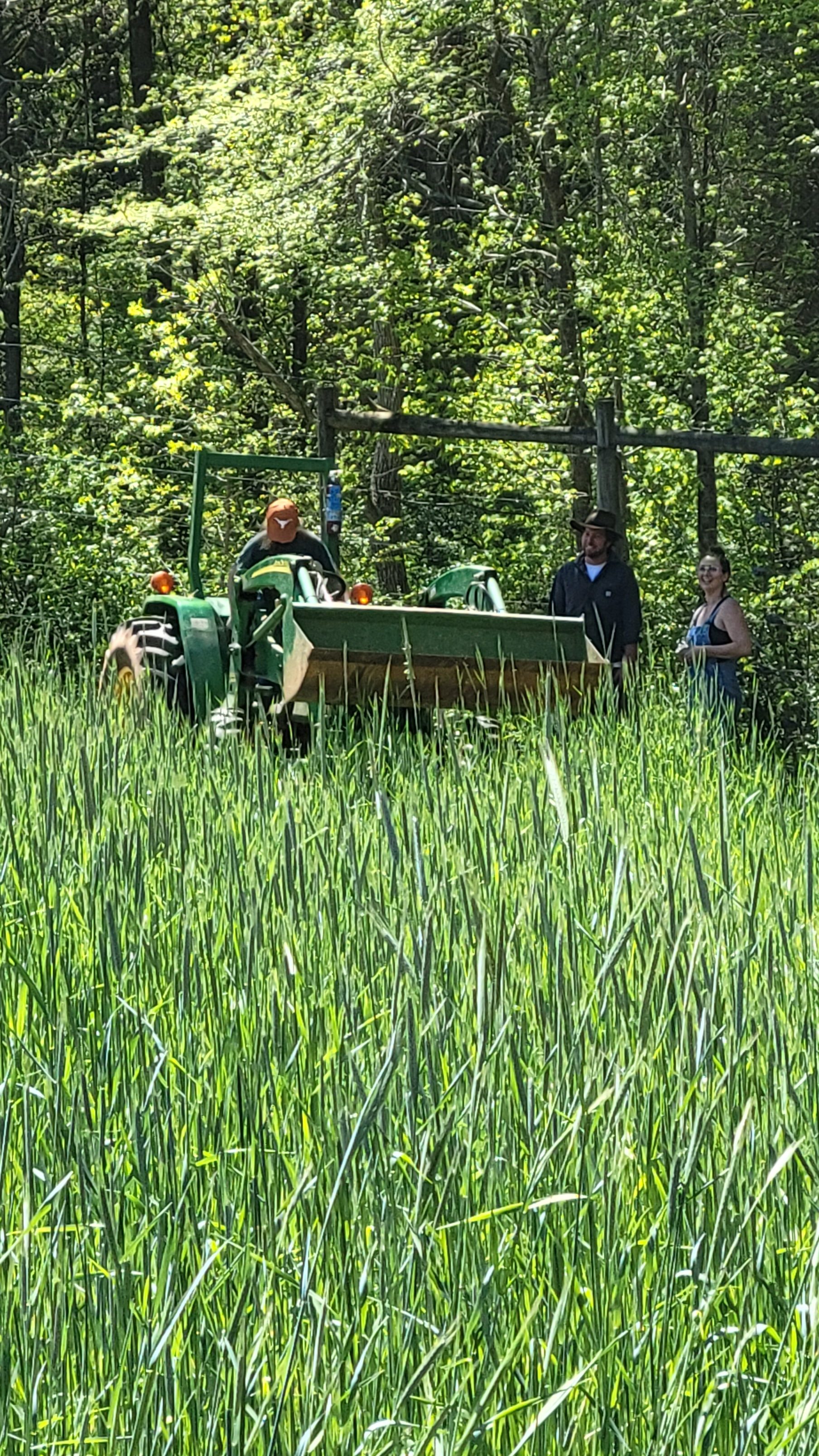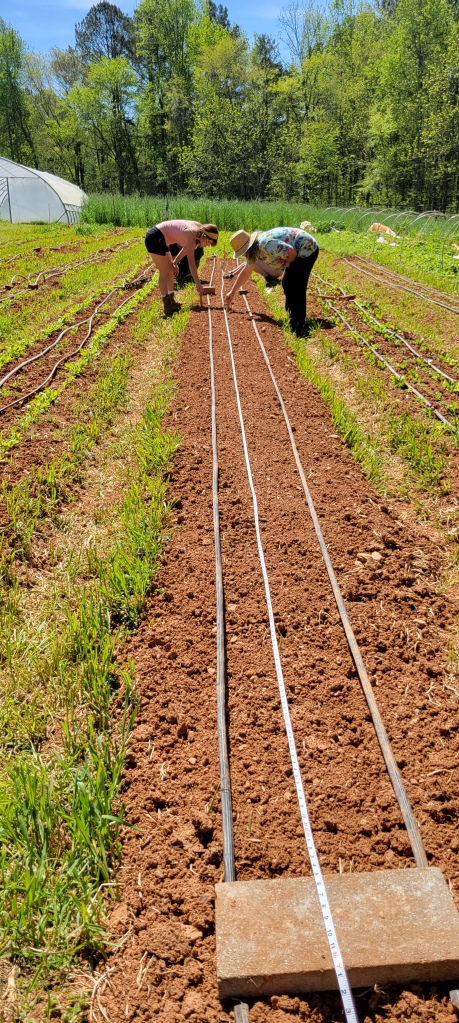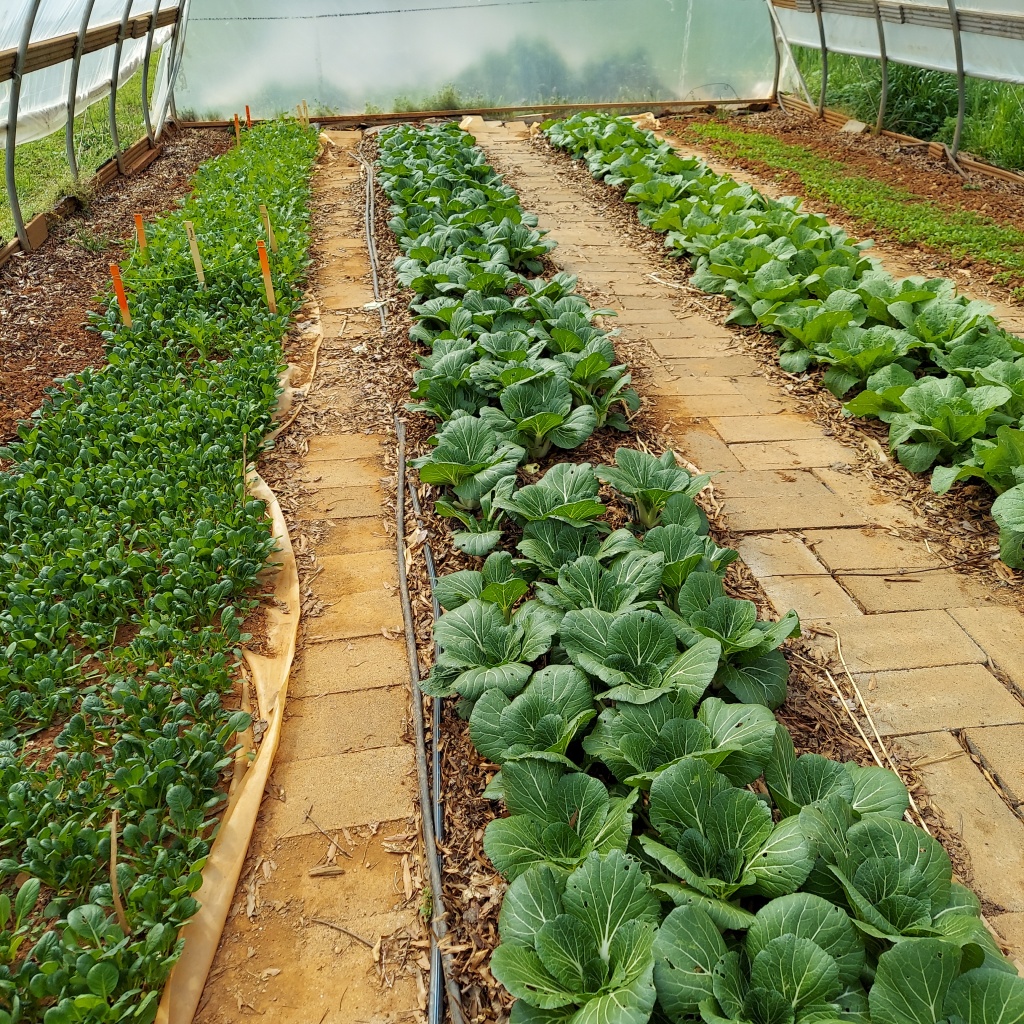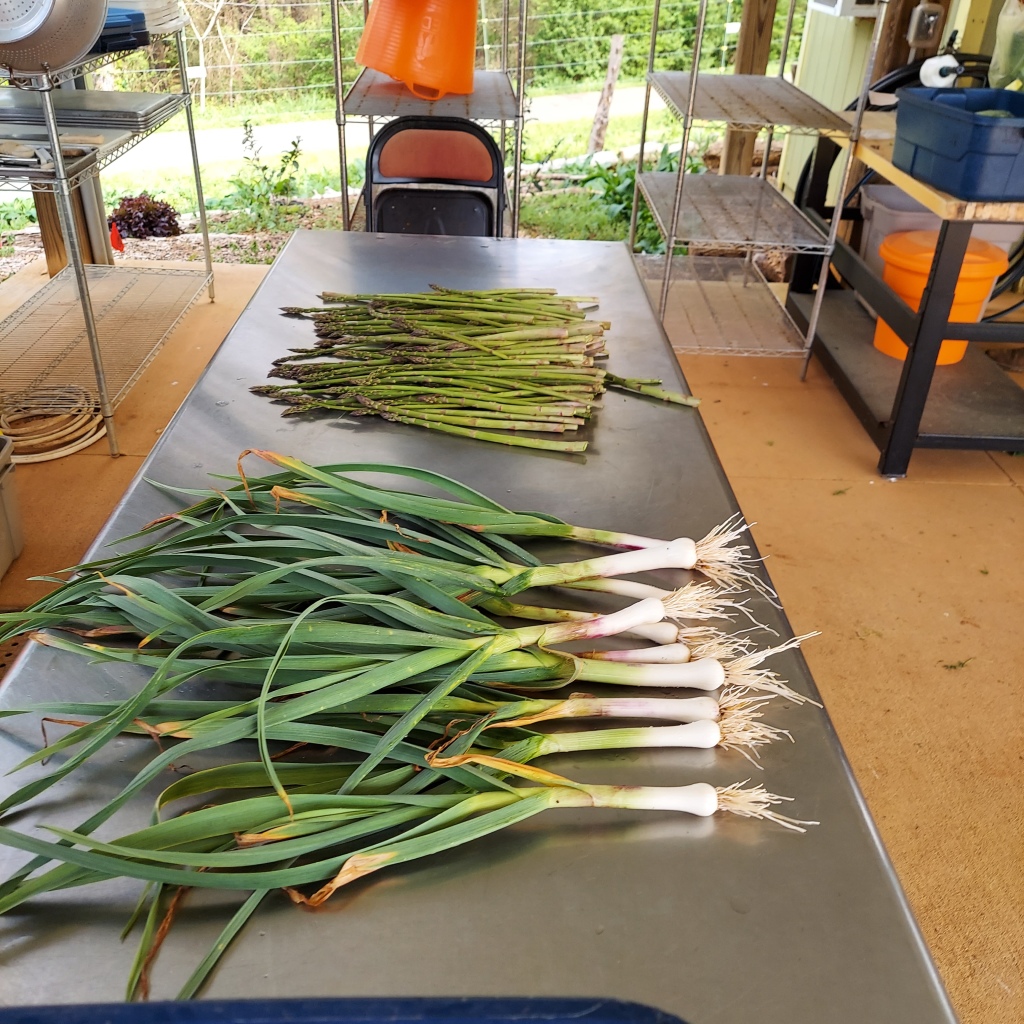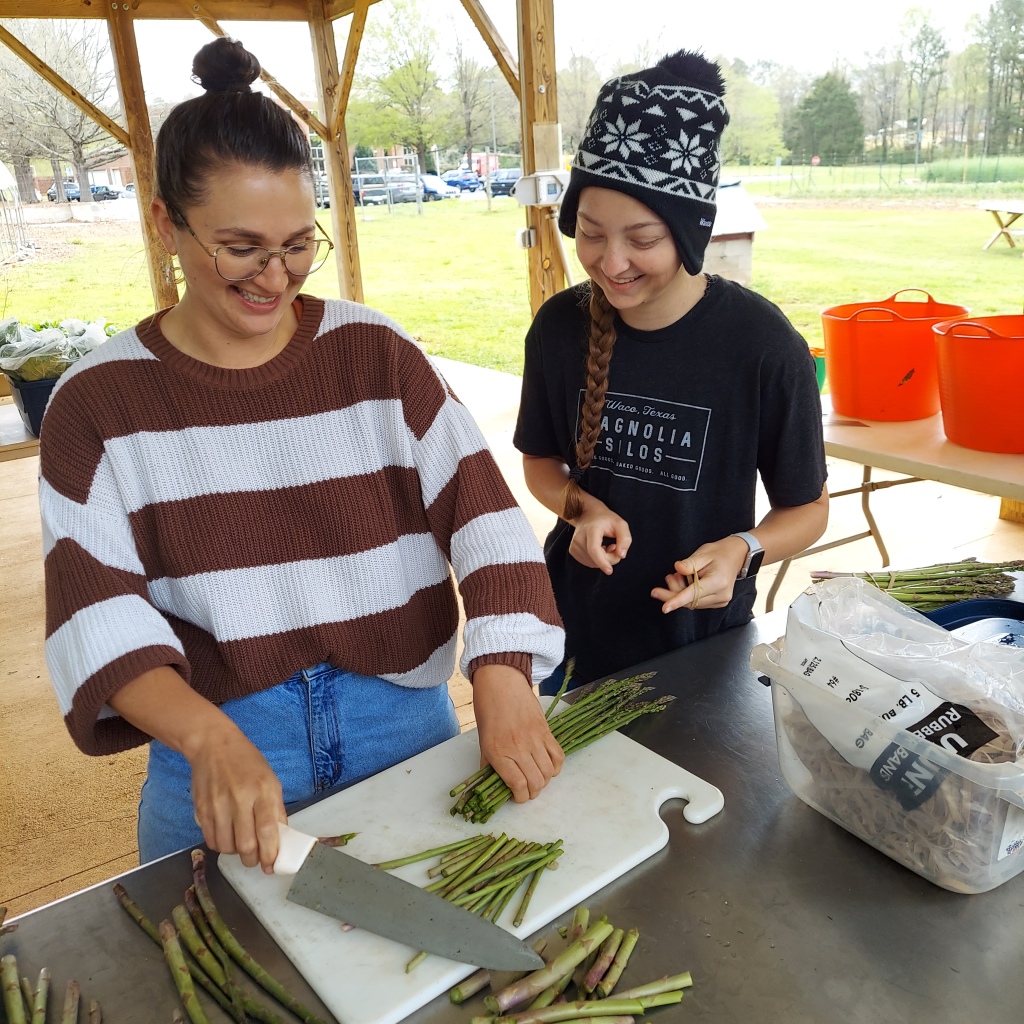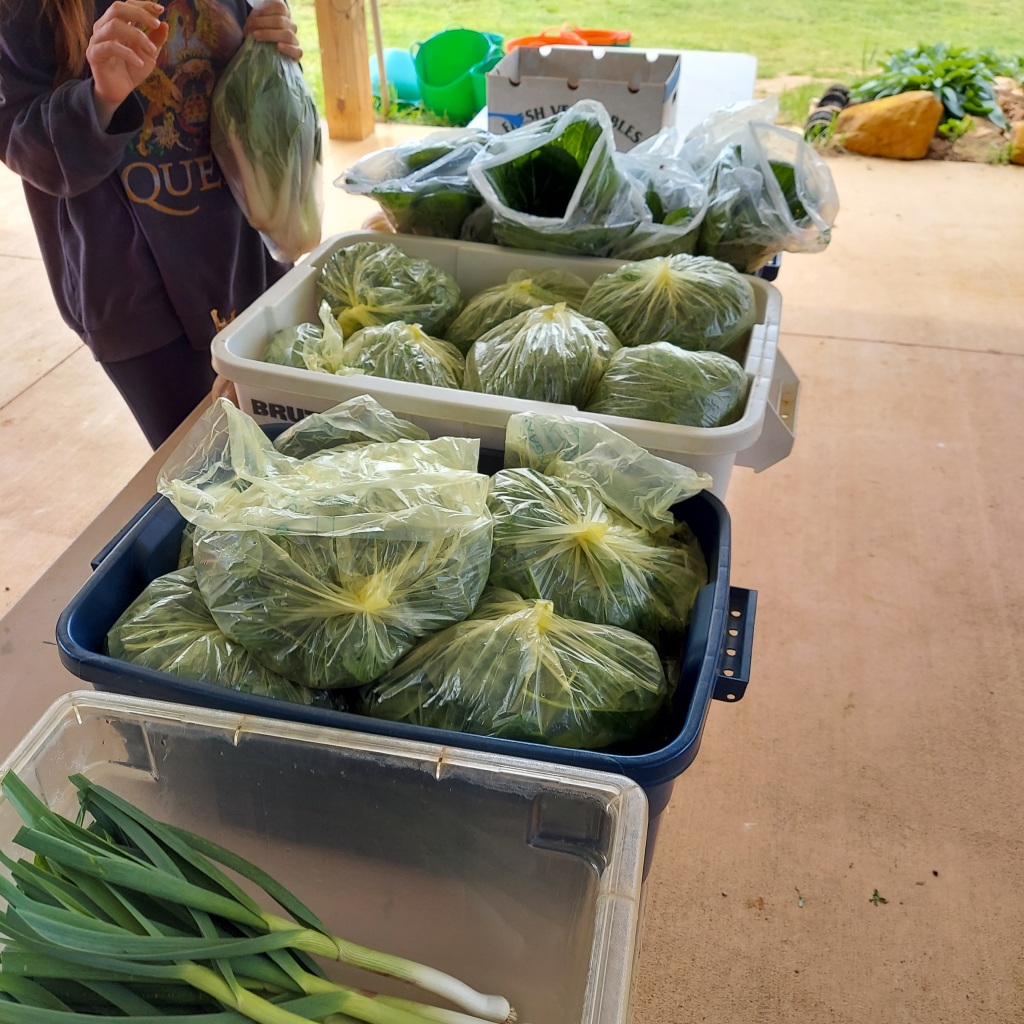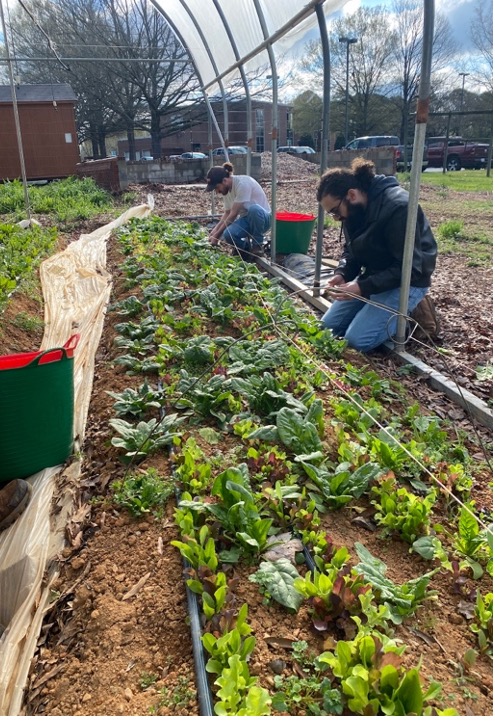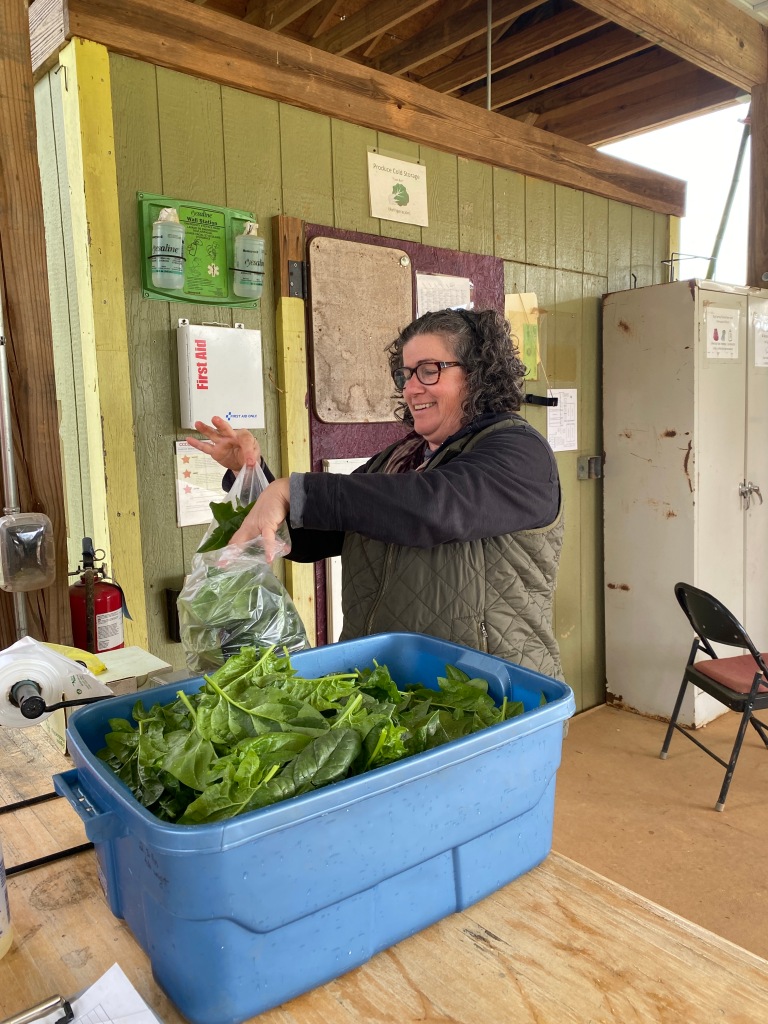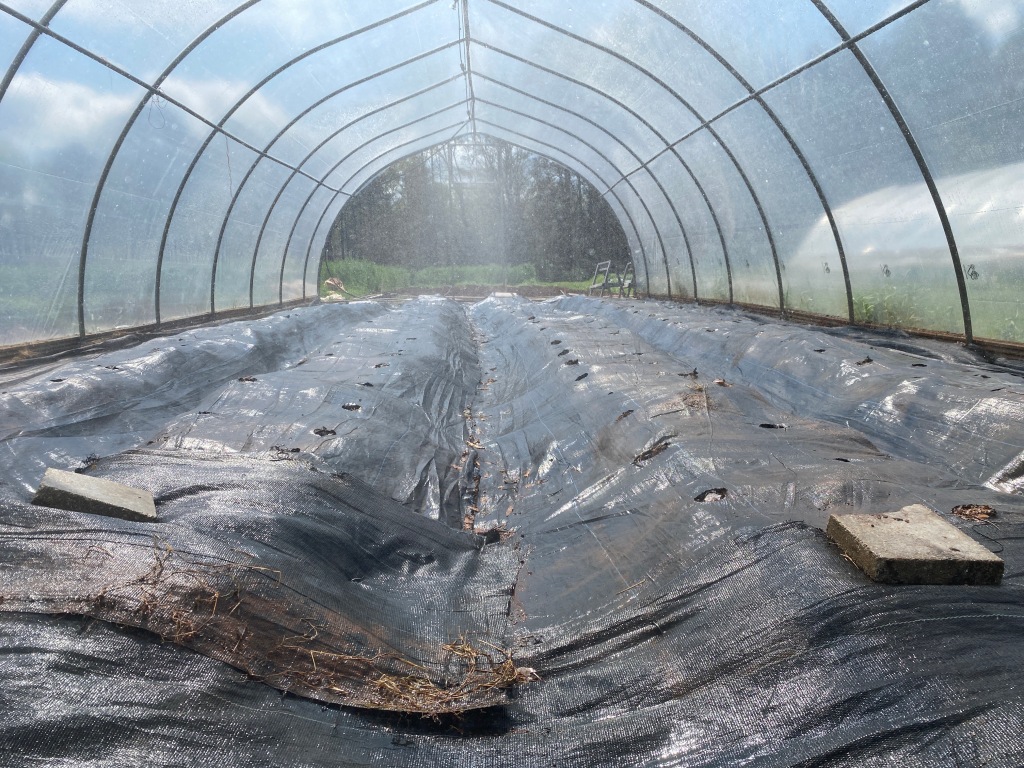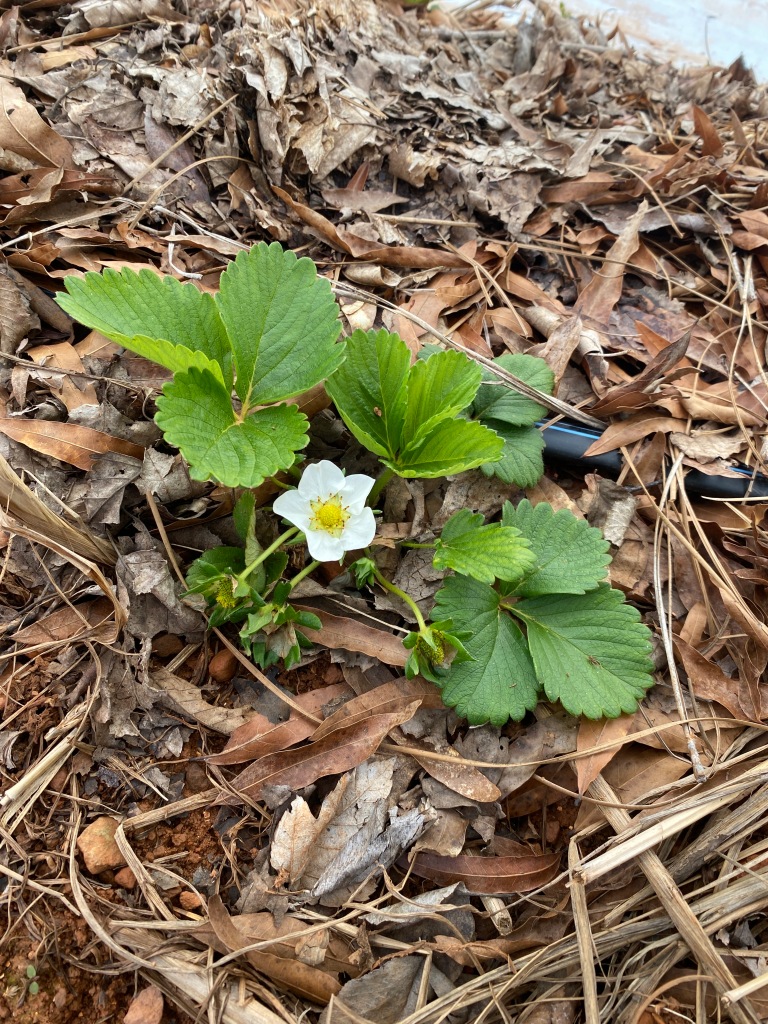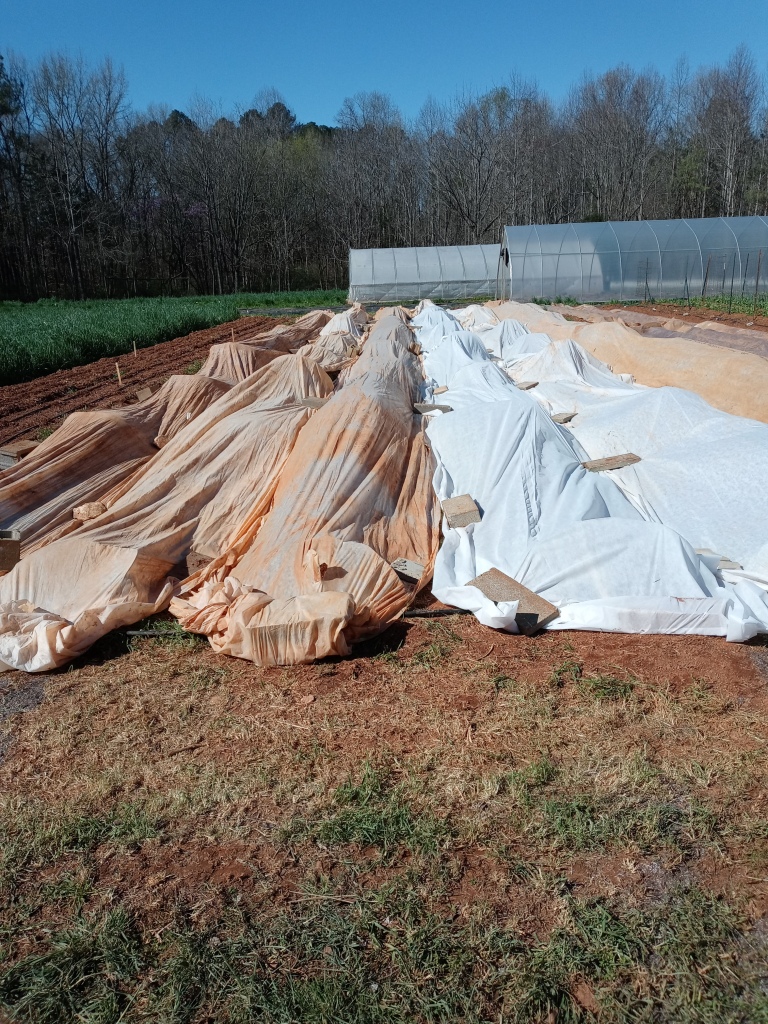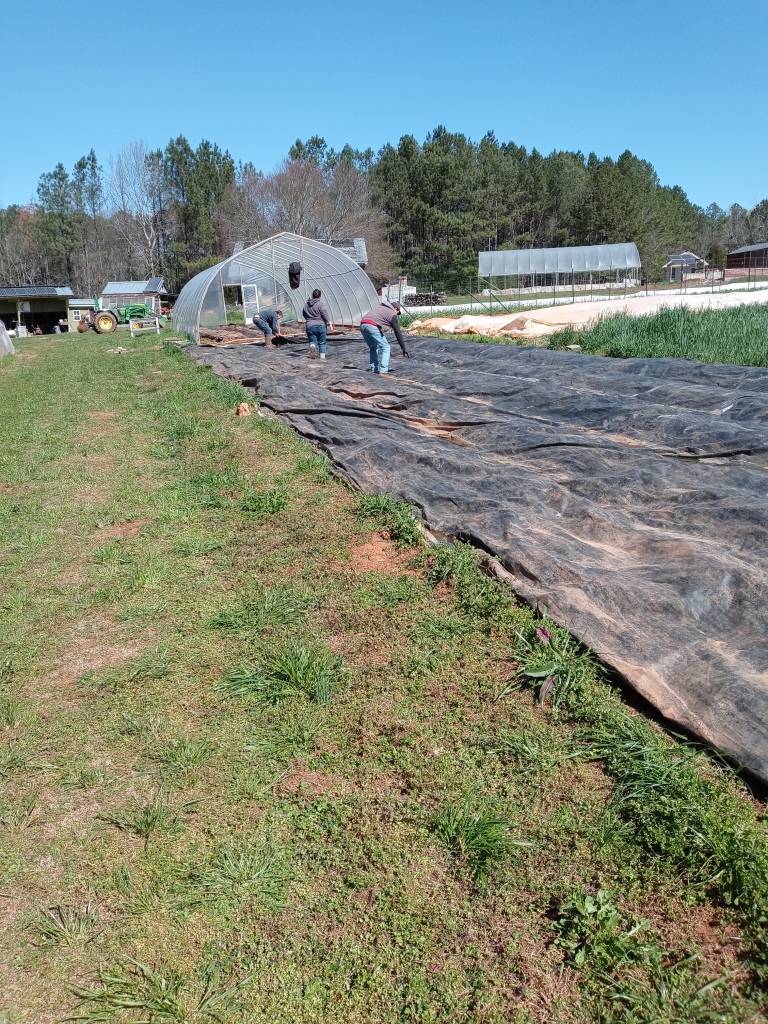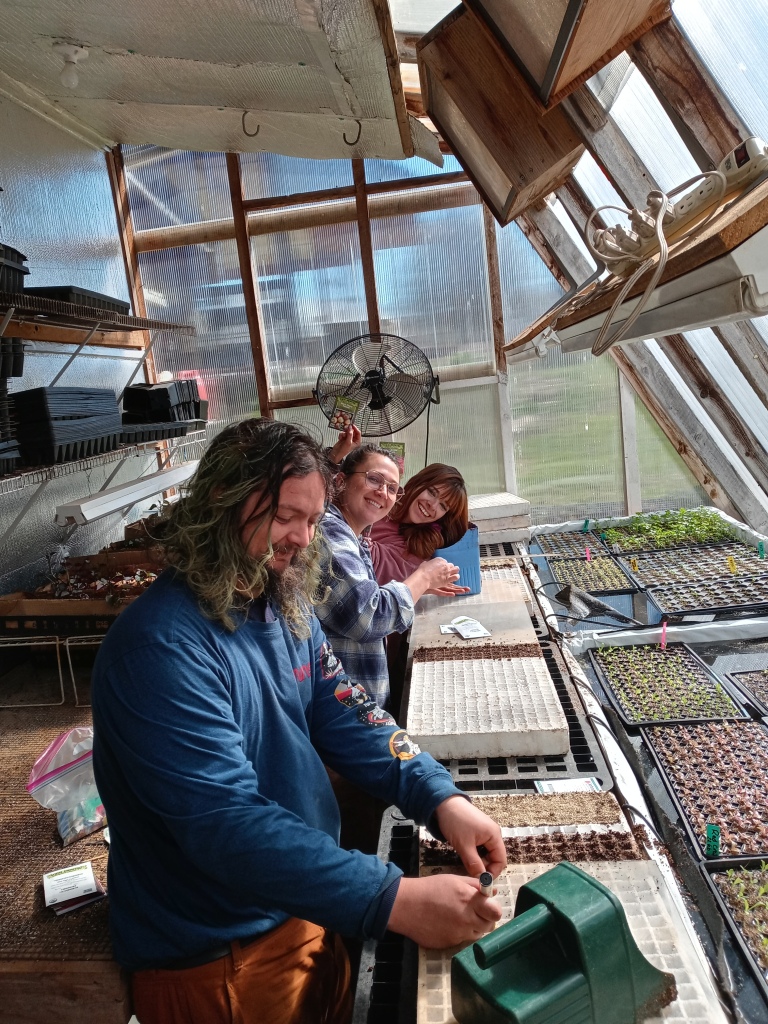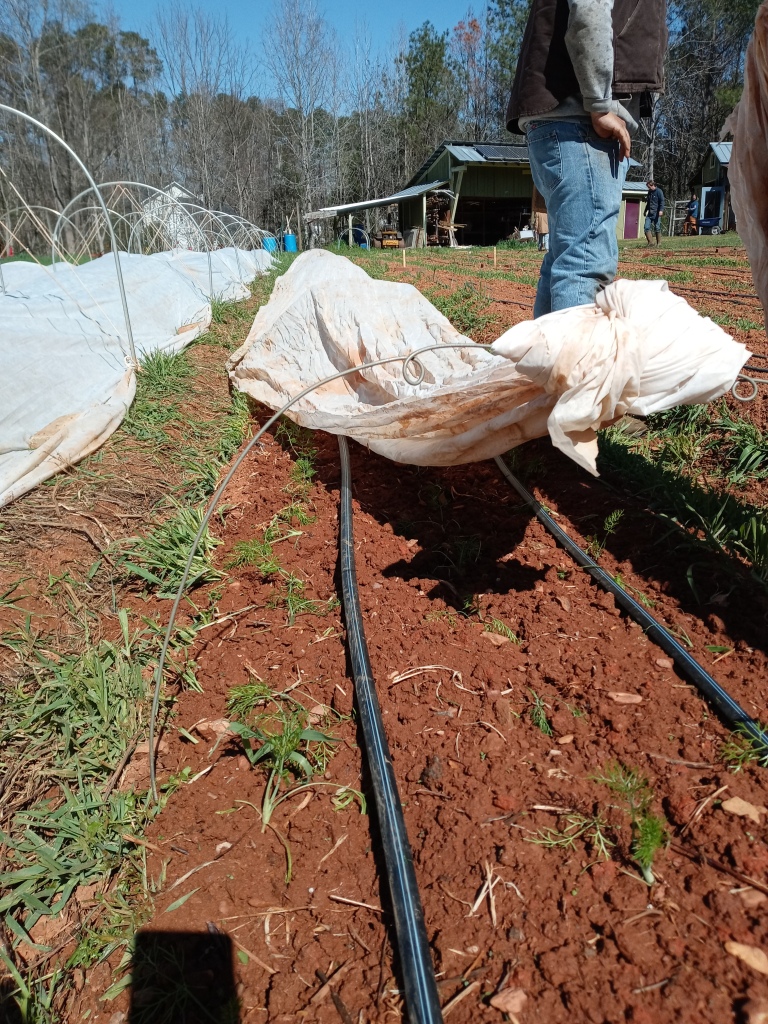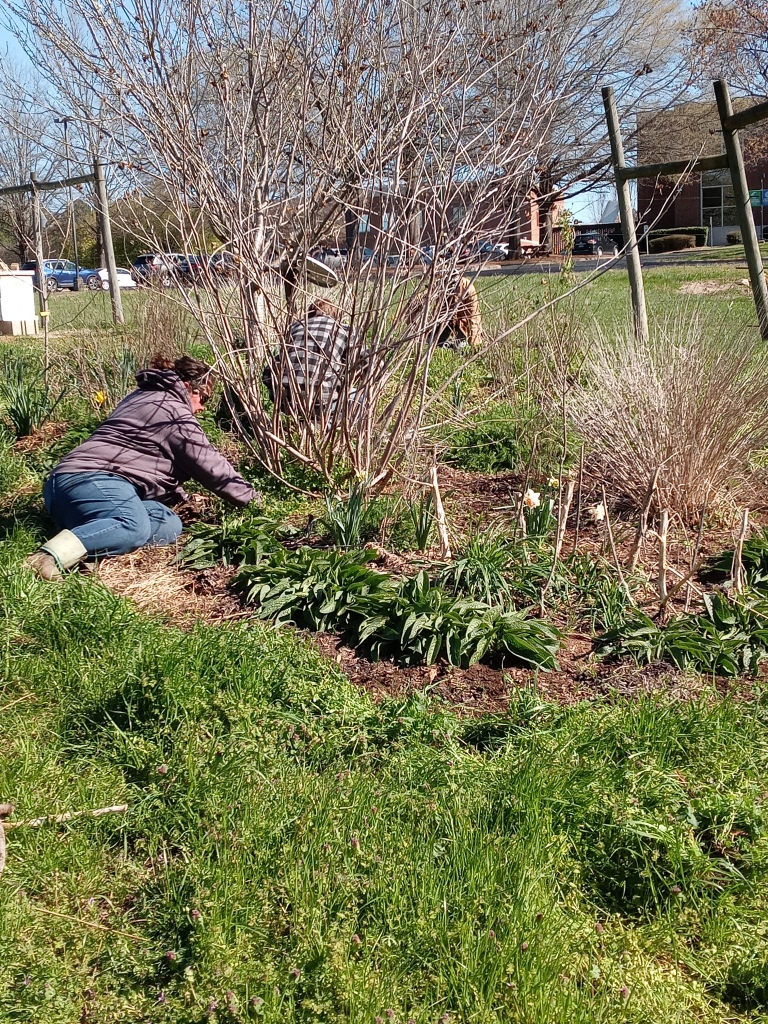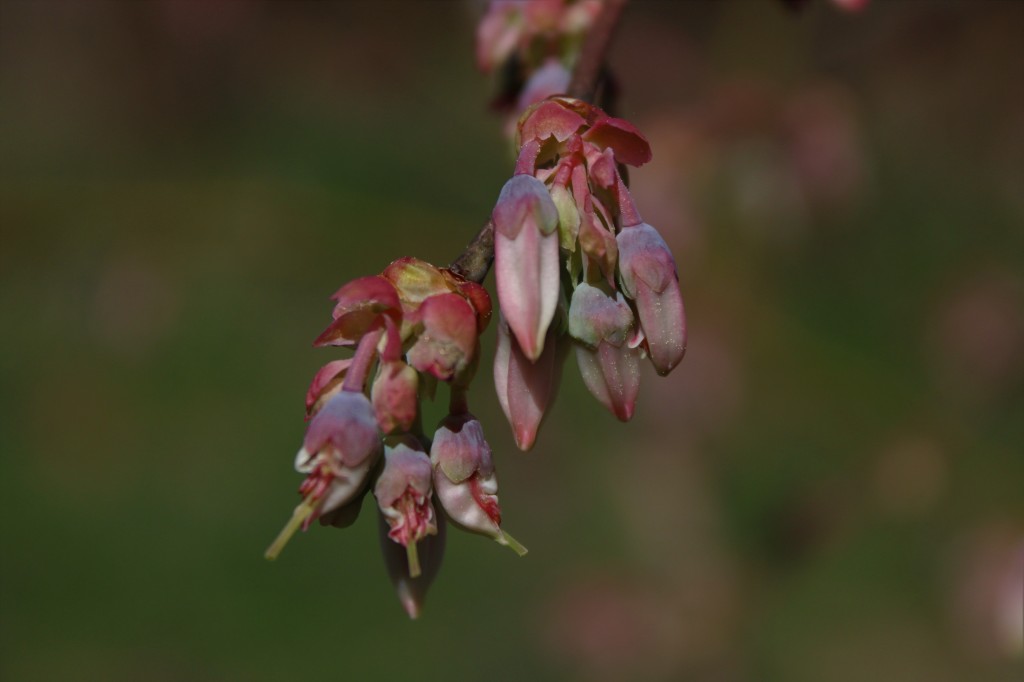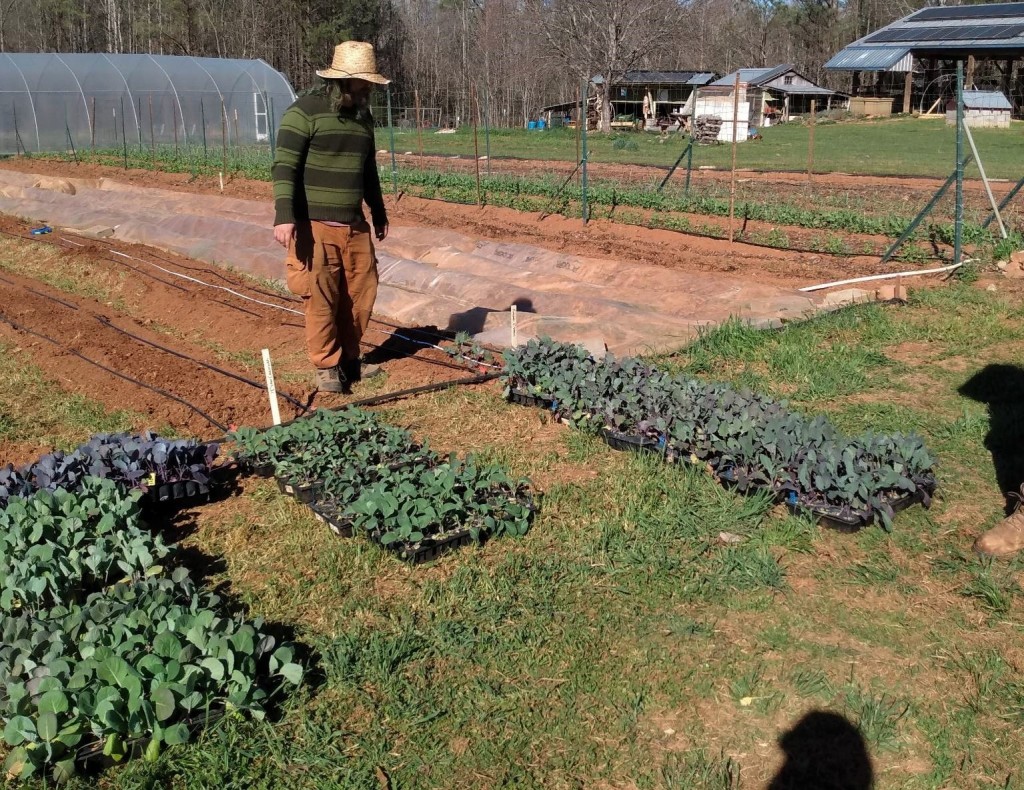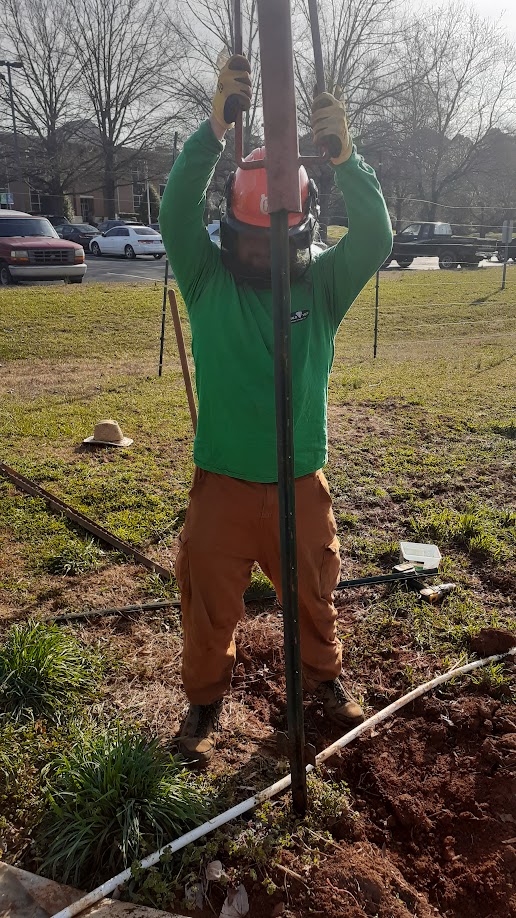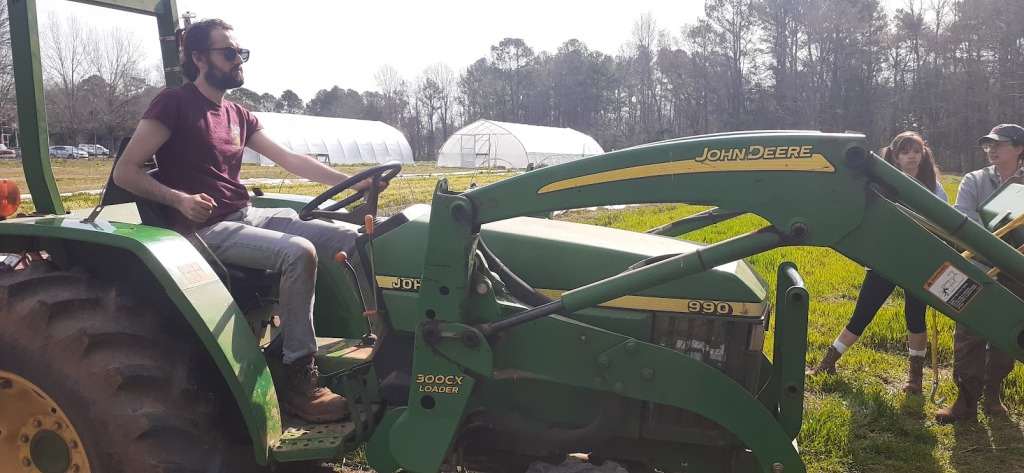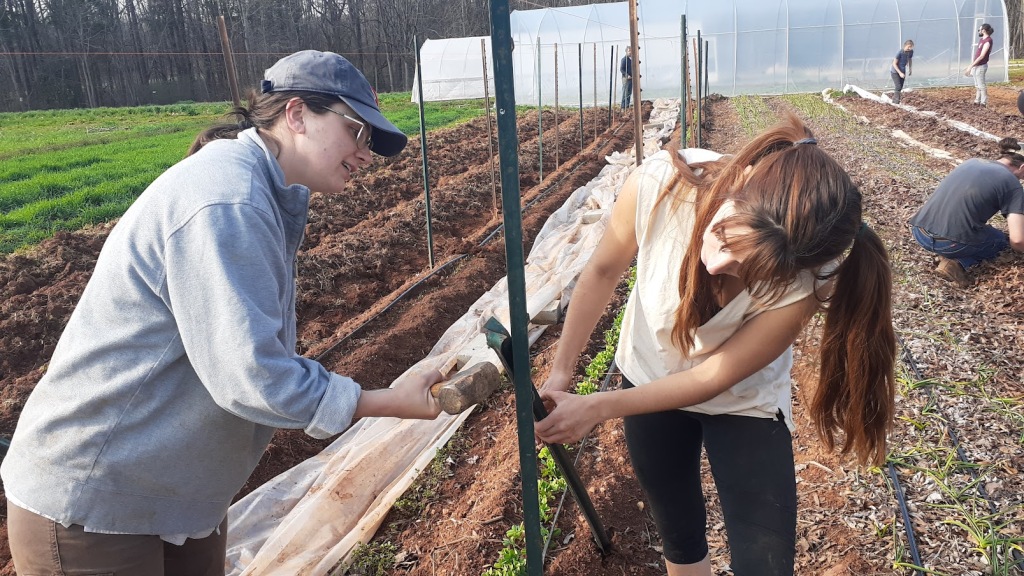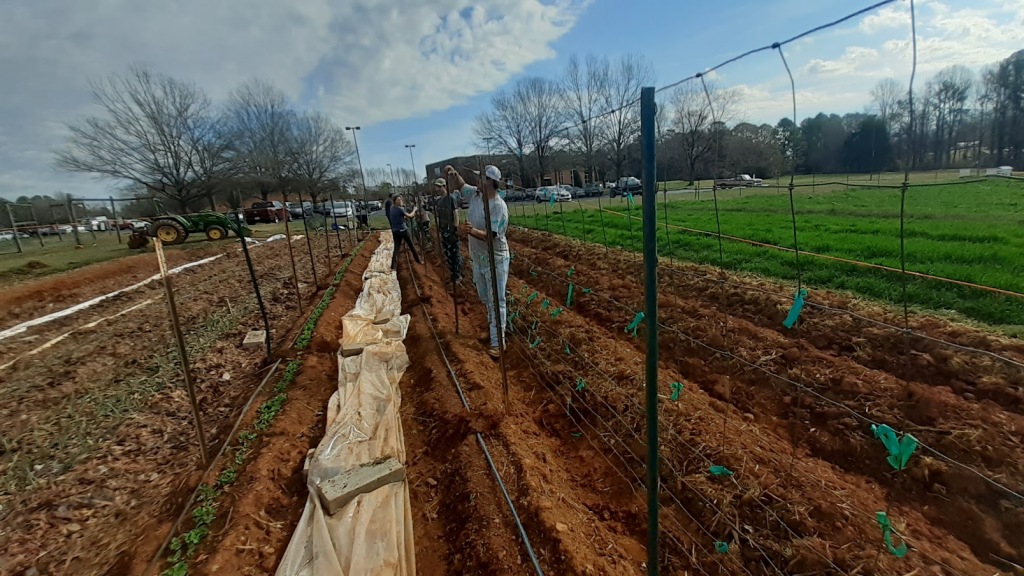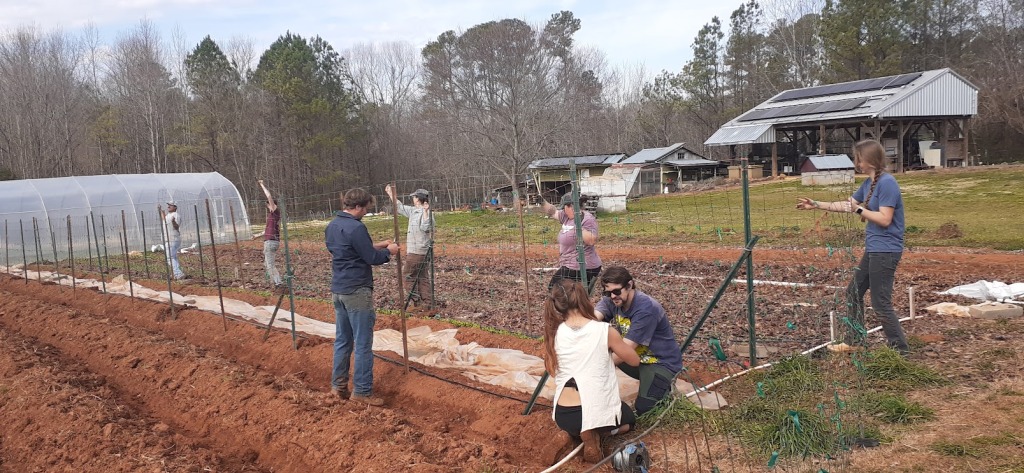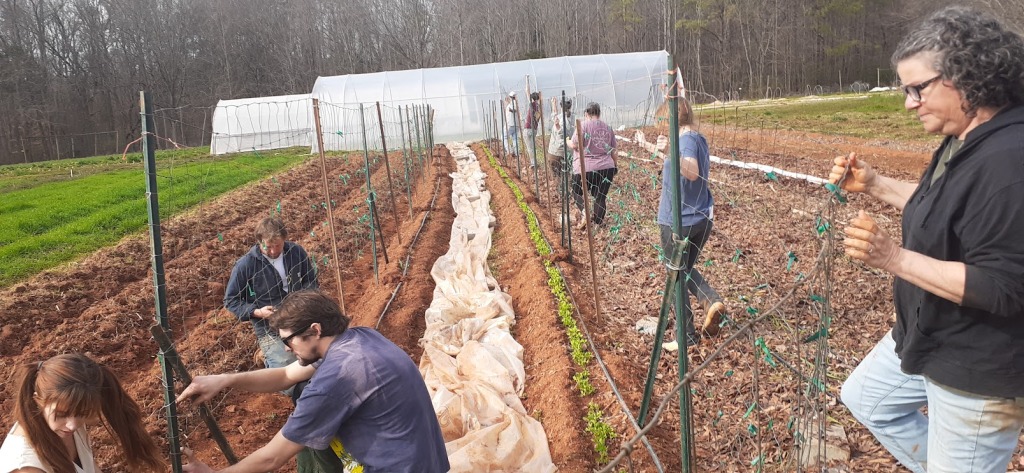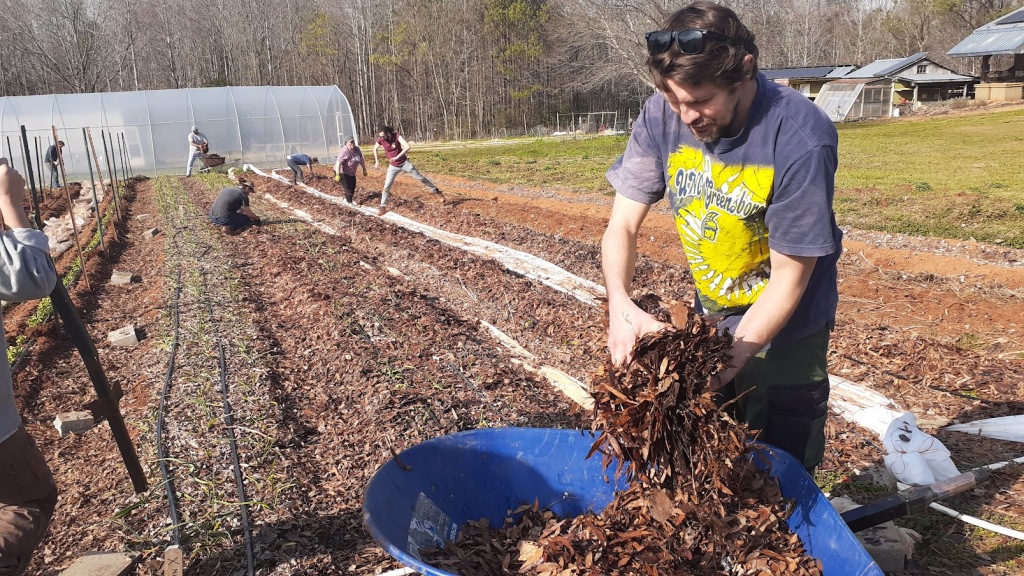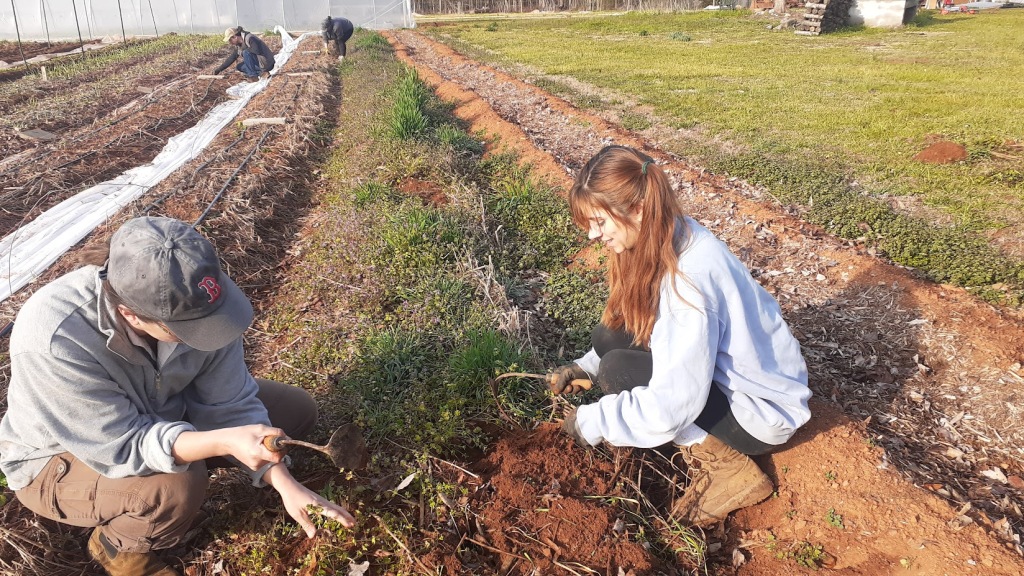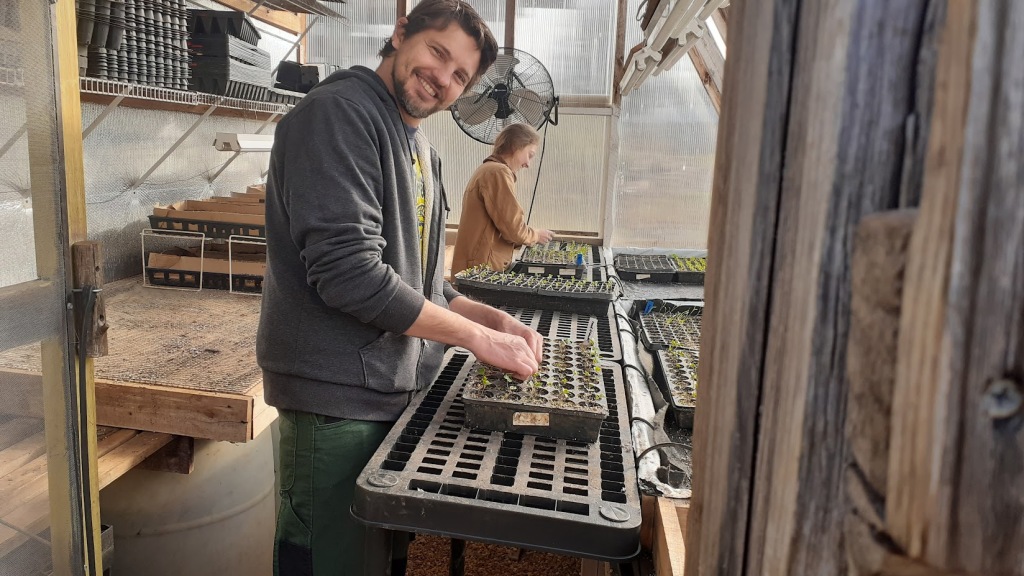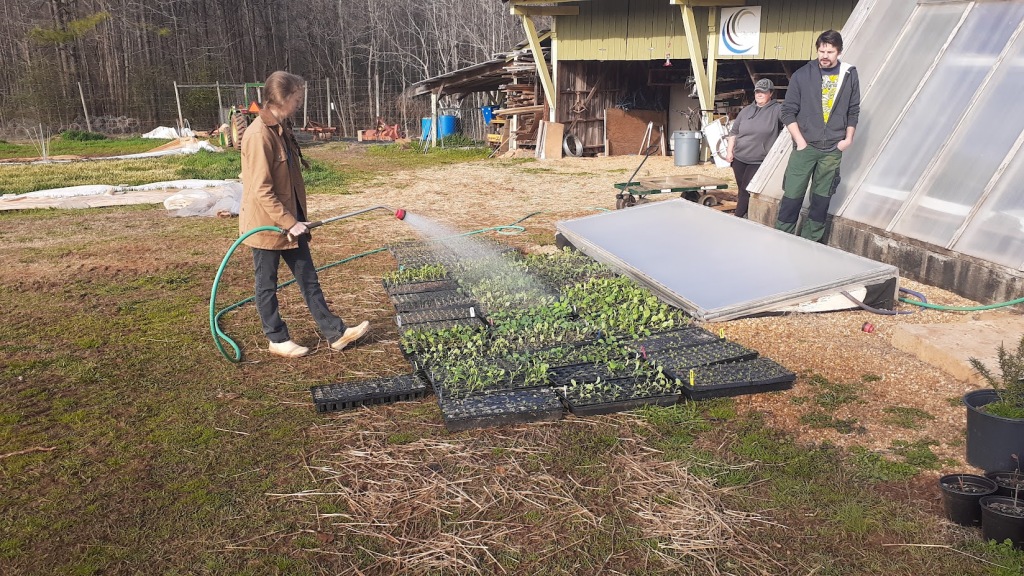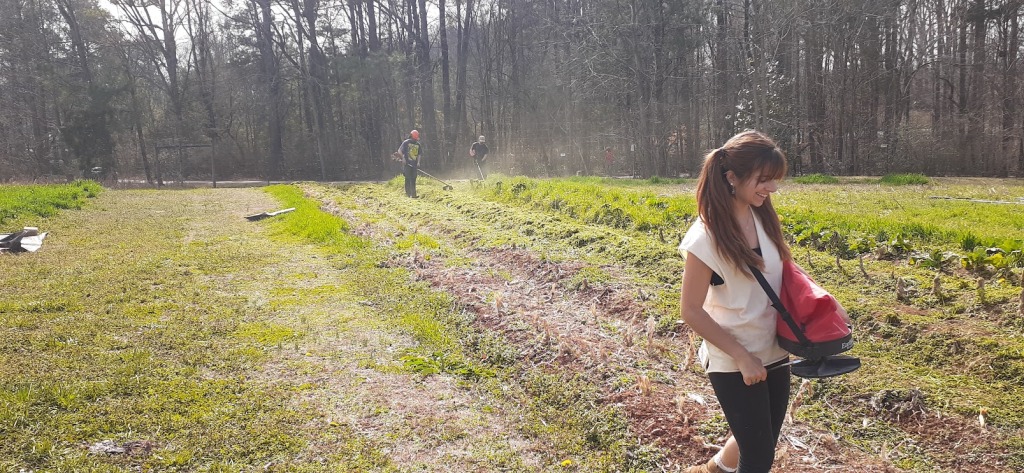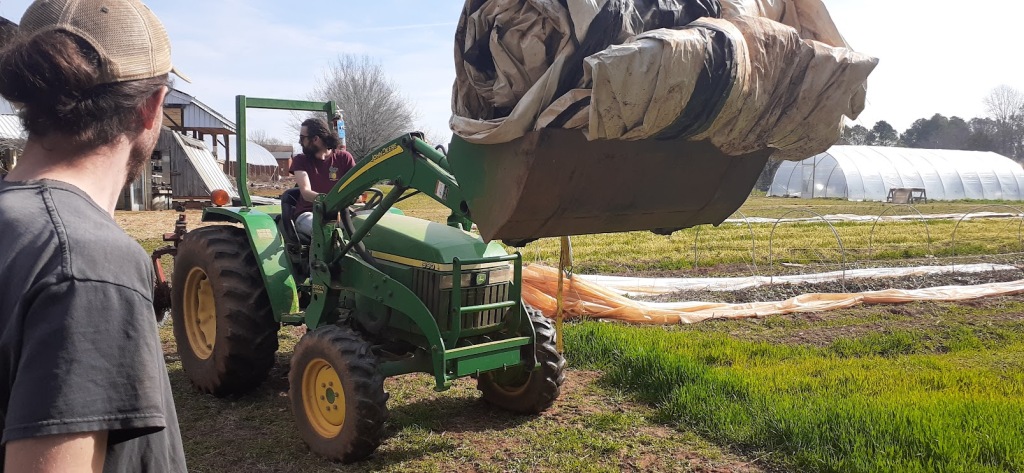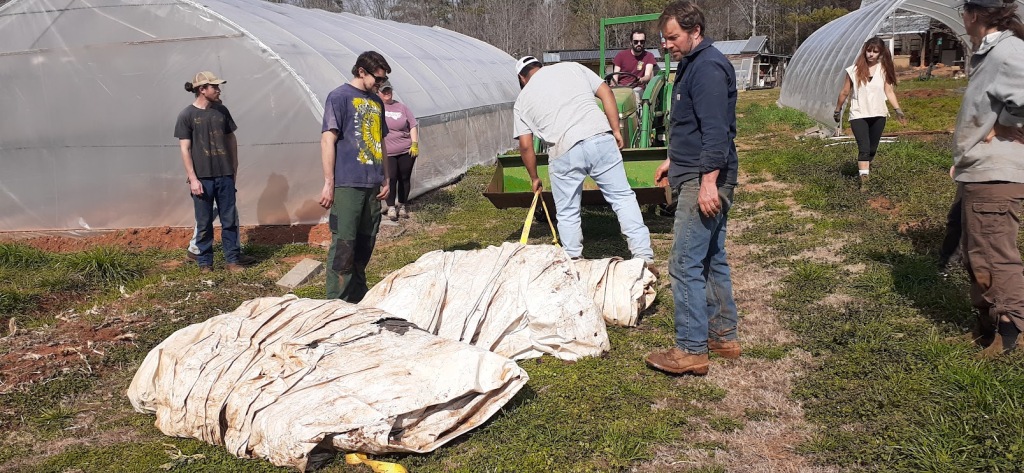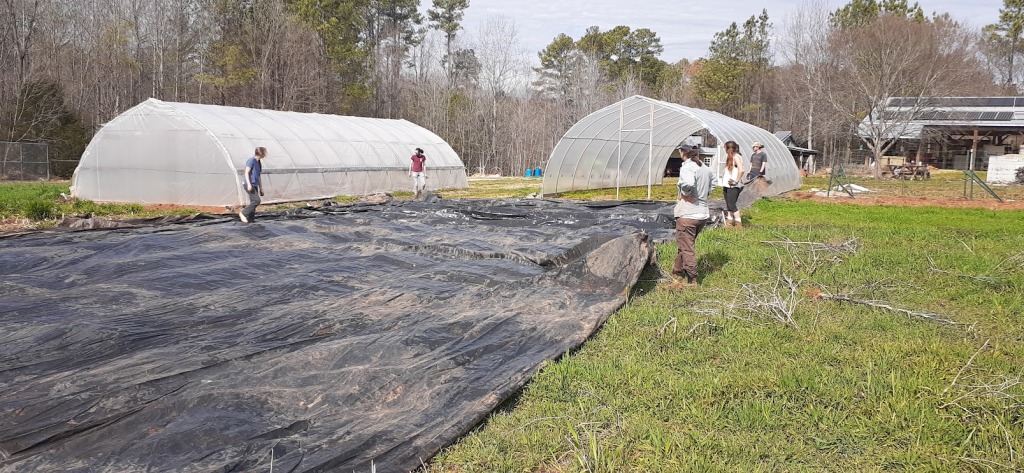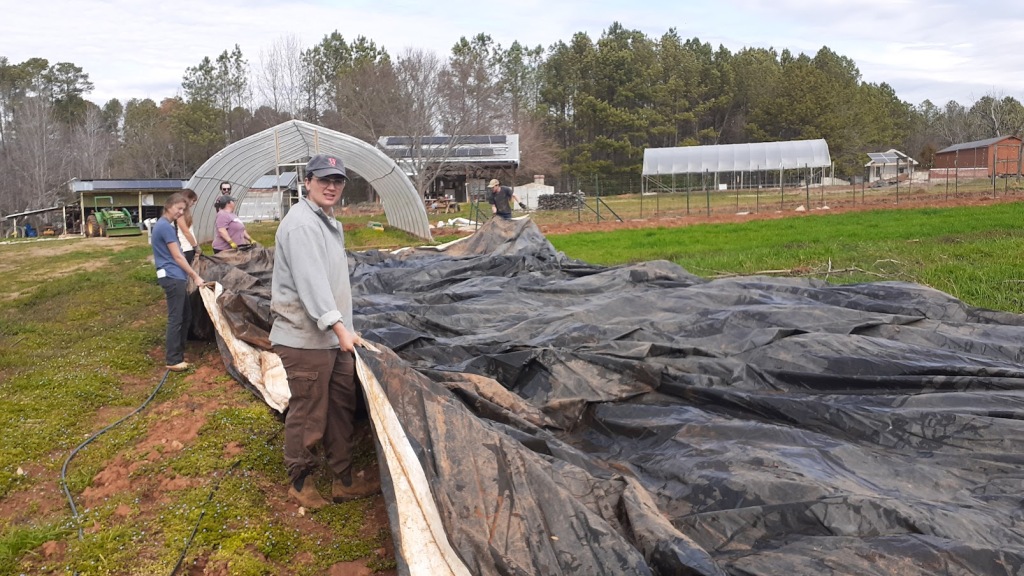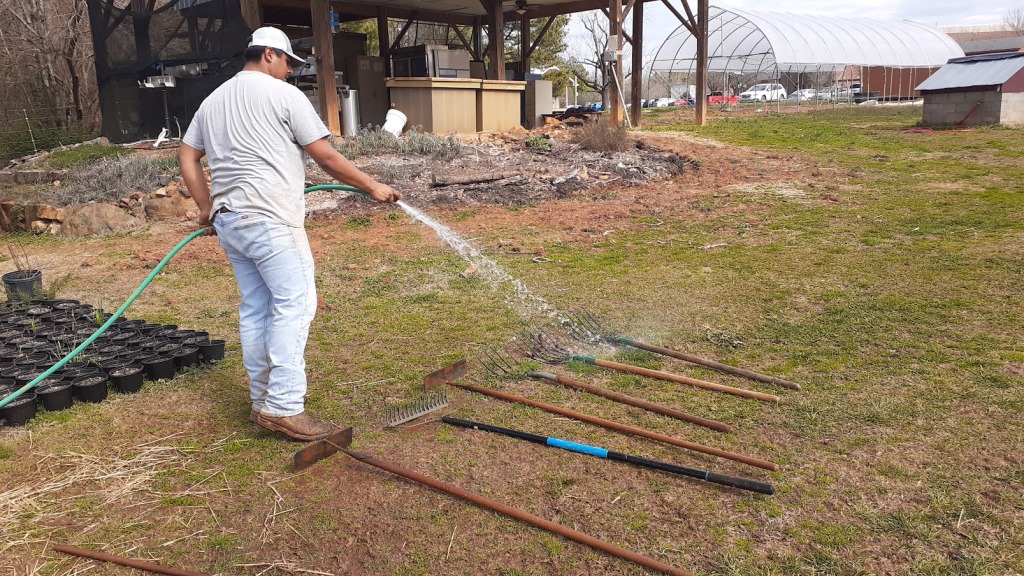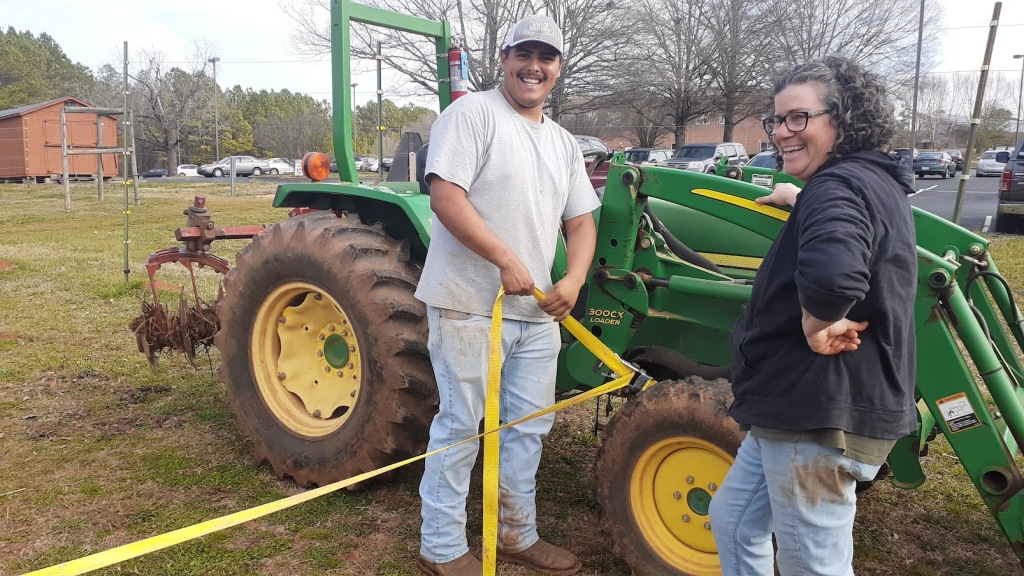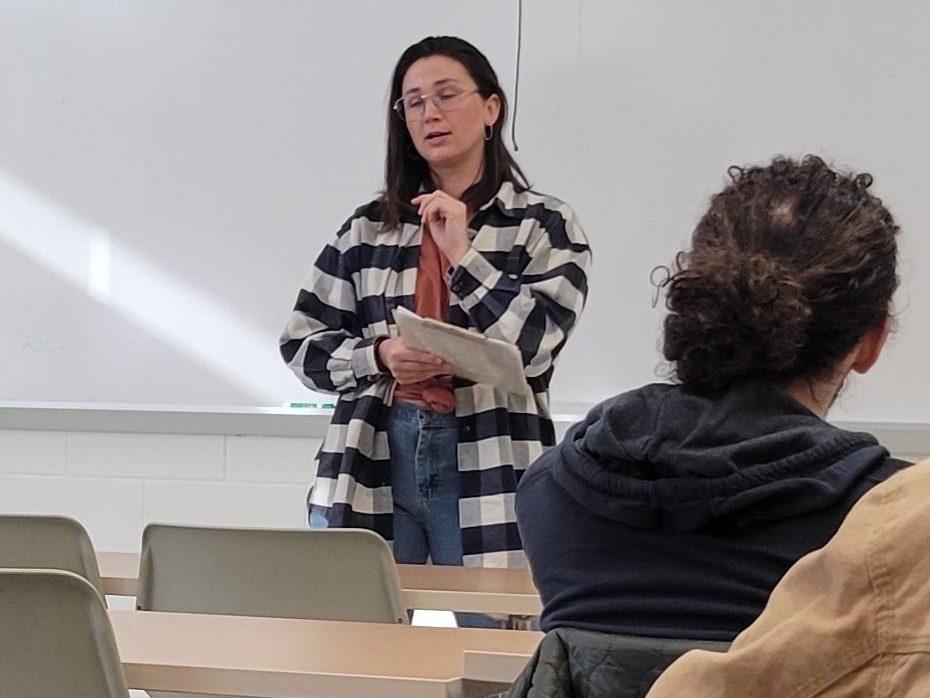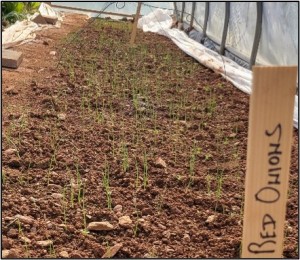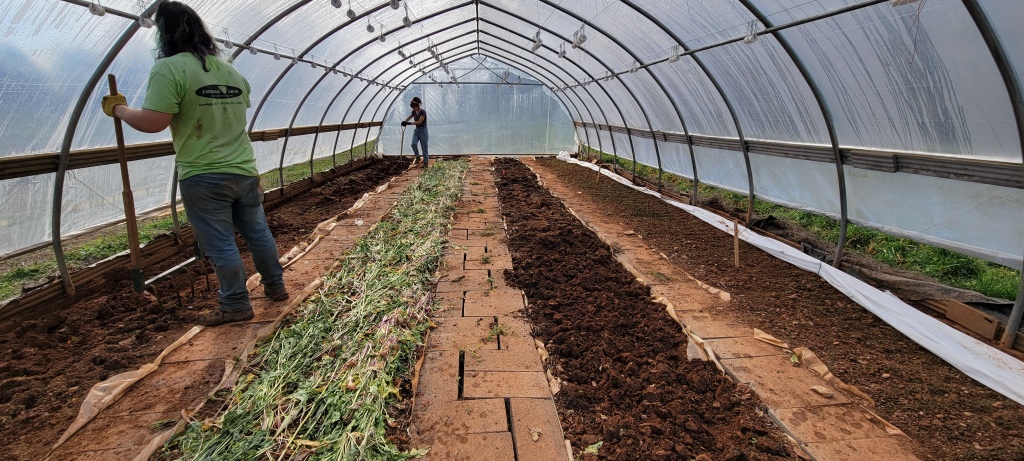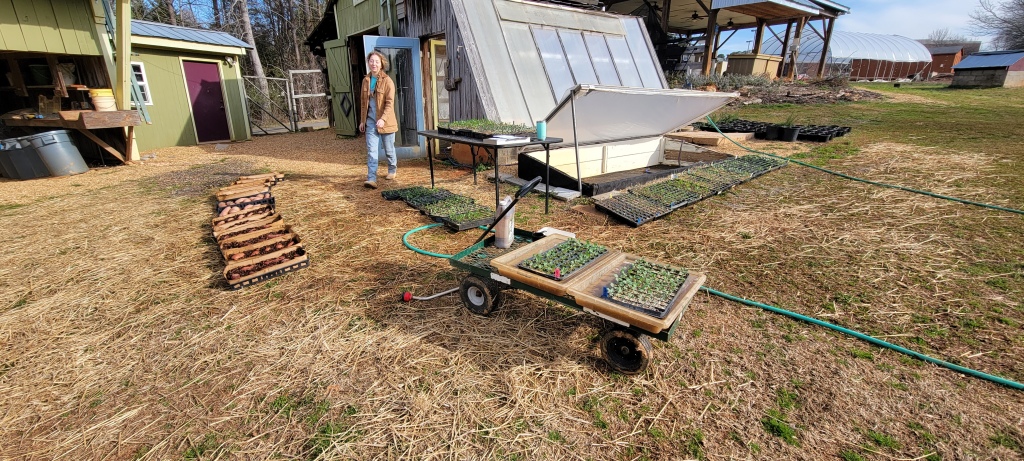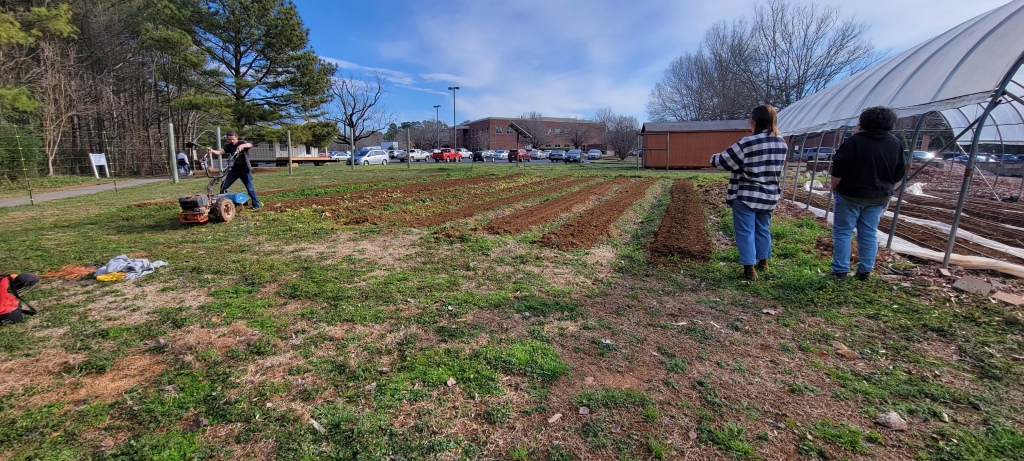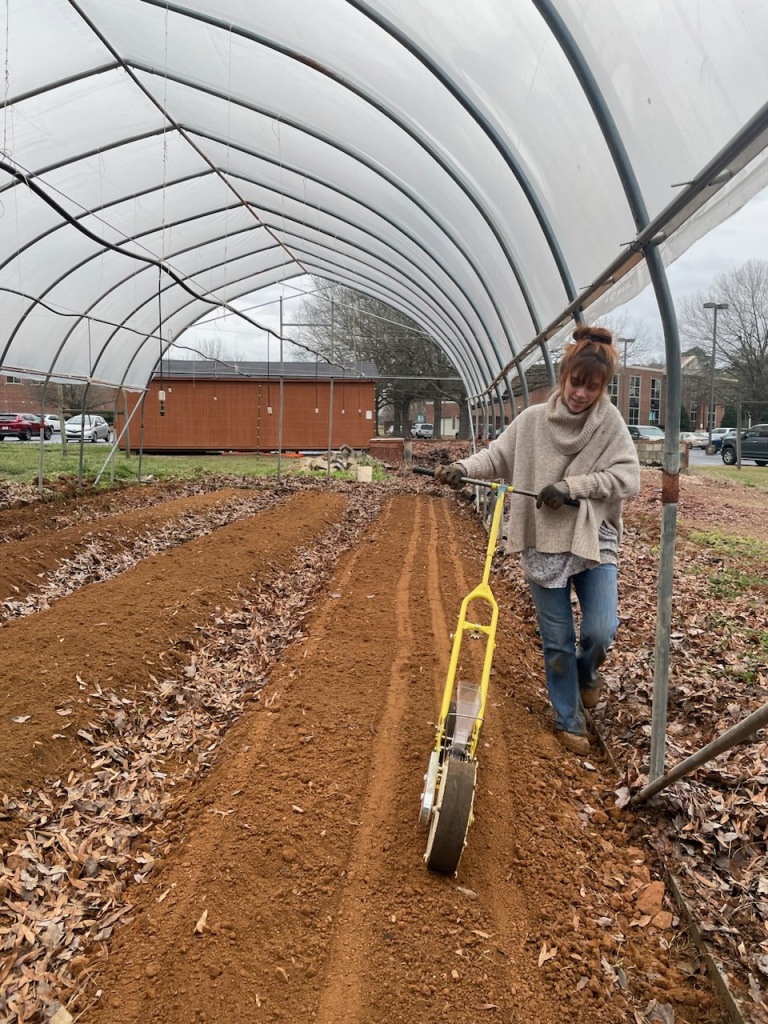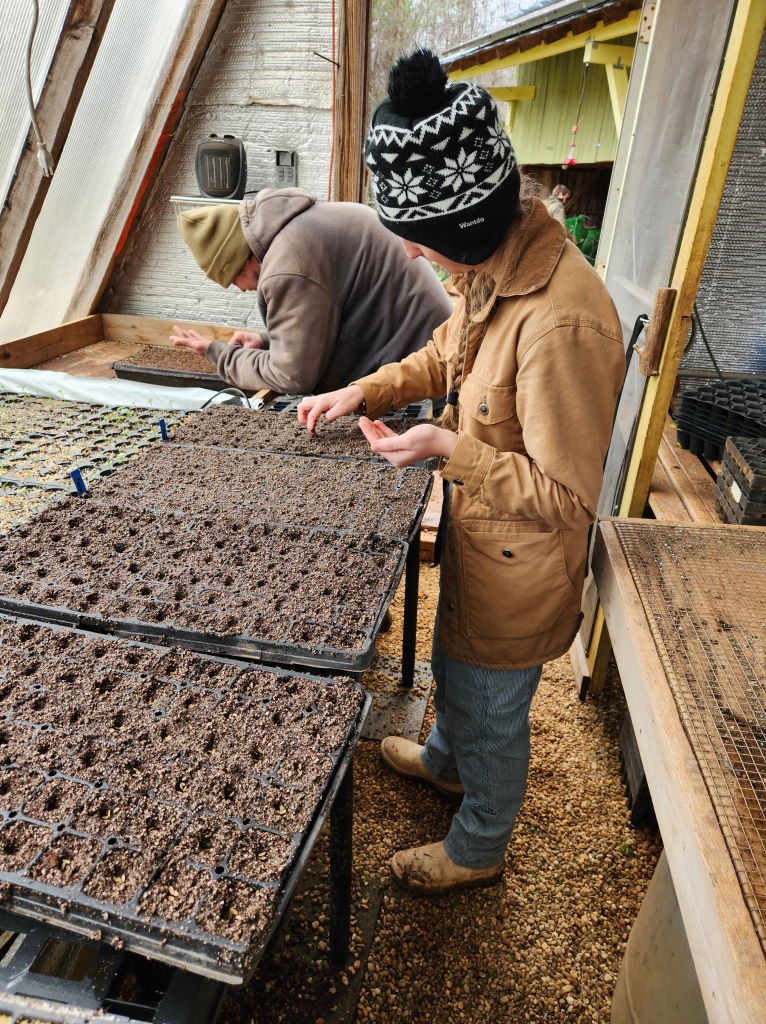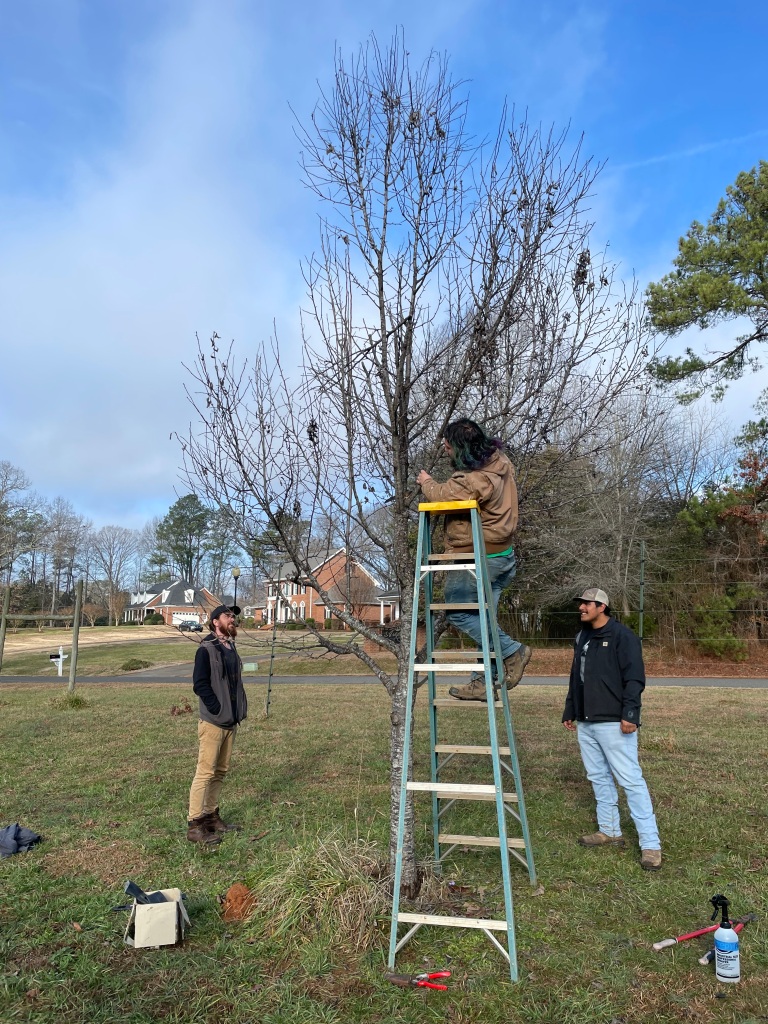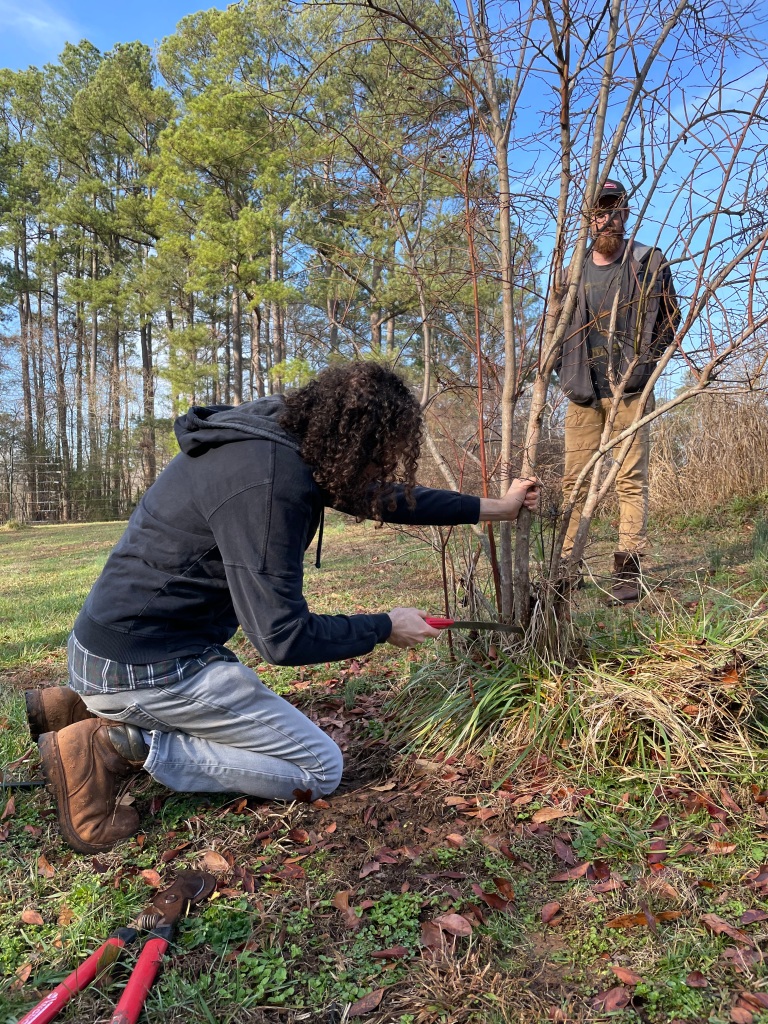Boy time sure does fly, seems like not long the advanced crop production class was surveying the orchard and making plans of what to grow and when for the spring CSA. This week for the advanced crop production class started with a walk around the orchard and the farm to see the progress the sustainable agriculture students and volunteers made this semester.
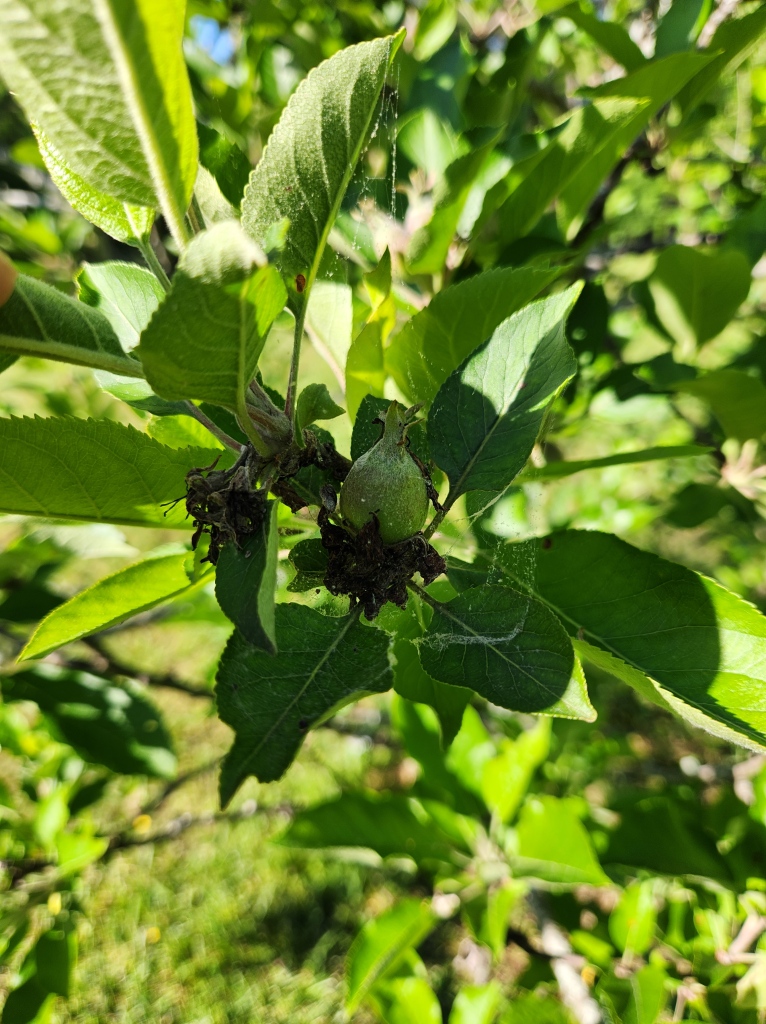
The first stop was in the orchard to check in on how far everything had come. We had several trees in January that were suffering from fireblight, and the fix for this was heavy pruning. I’m happy to report that many of those affected trees have bounced back and already have fruit growing on them, like the apple pictured above. The blueberries are also looking great after the heavy pruning the advanced crop production crew gave them back in January. The bushes have a lot of new growth and each had fruit developing, should be a good year for blueberries!
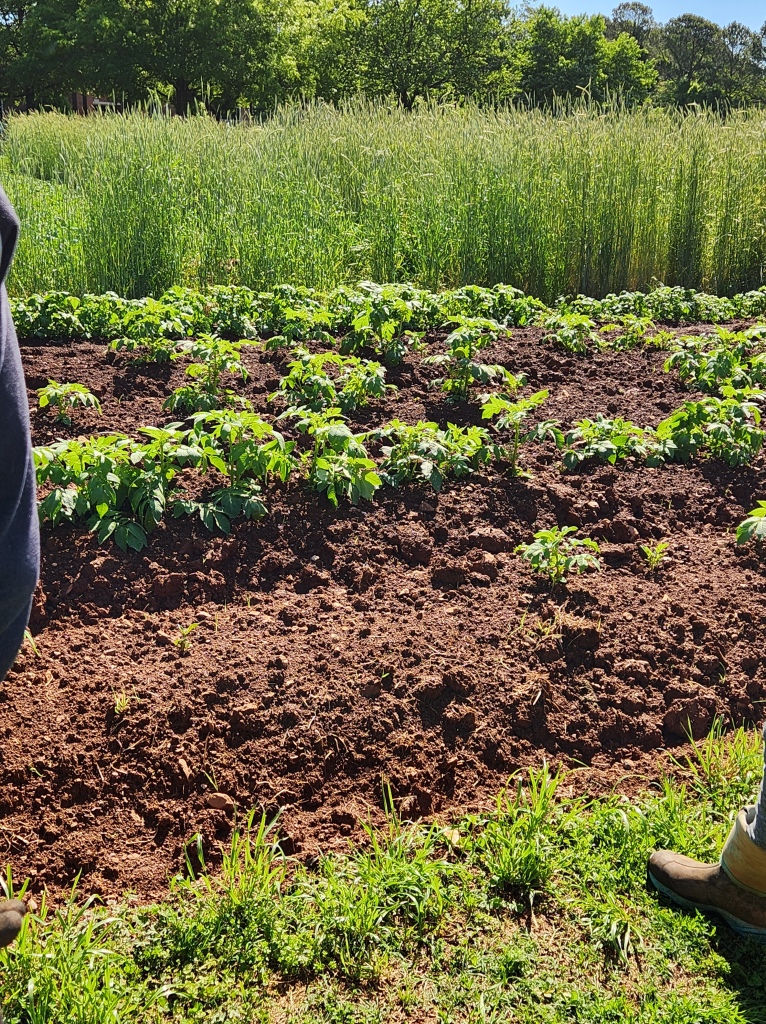
Moving on to the student farm, pictured above is our potatoes looking great so far! We’ve come a long way from those cold, rainy winter days to our thriving fields and happy plants. We’re at the real start of peak farming as May is when just about everything is growing and there’s so much to harvest. We also planted thyme and nicotania or flowering tobacco in the pollinator garden around the pack shed. On Wednesday we had Owen back as our farm manager for the day and we got a lot of harvesting done for our last box of the spring CSA, as well as some weeding in the asparagus bed.
Each semester the orchard and farm look better and better, thanks to our great sustainable agriculture faculty, students, and volunteers. This spring semester’s drawing to a close, but if you’d like to volunteer time during the summer or fall to the CSA there’ll be plenty of food to harvest! And, congratulations to all the graduating ag students! We can’t wait to see the crops and livestock you’ll grow!
— Charlie Vedell
